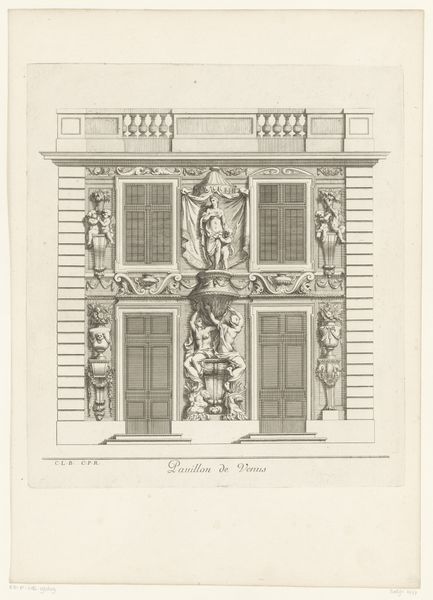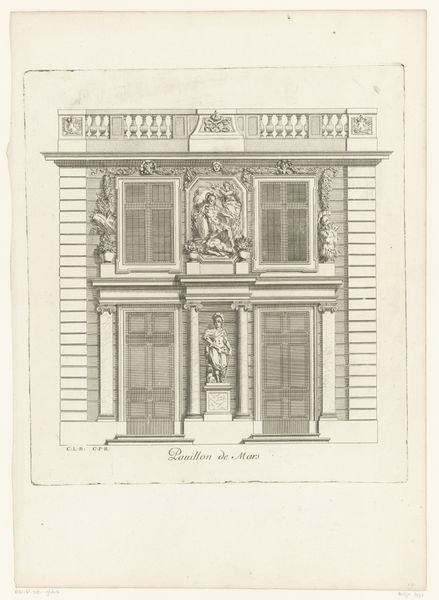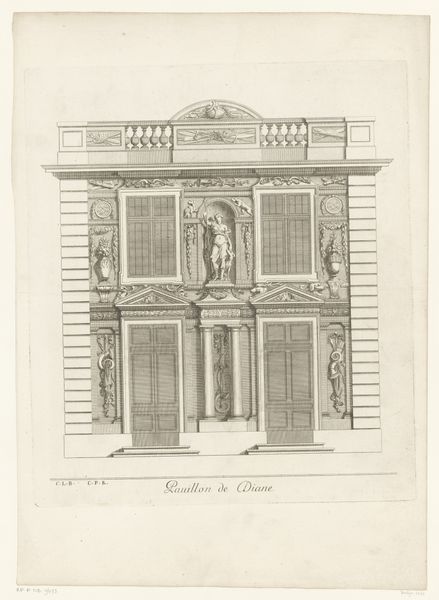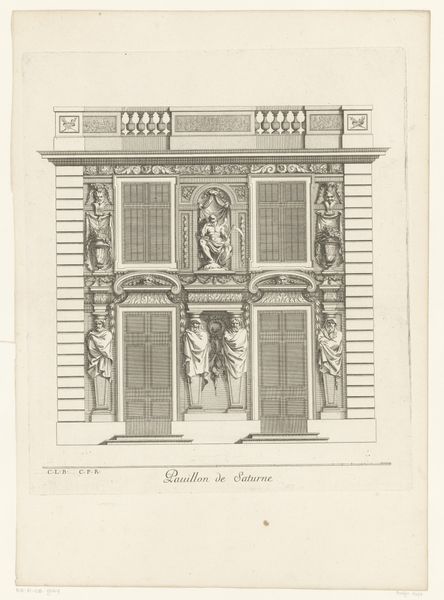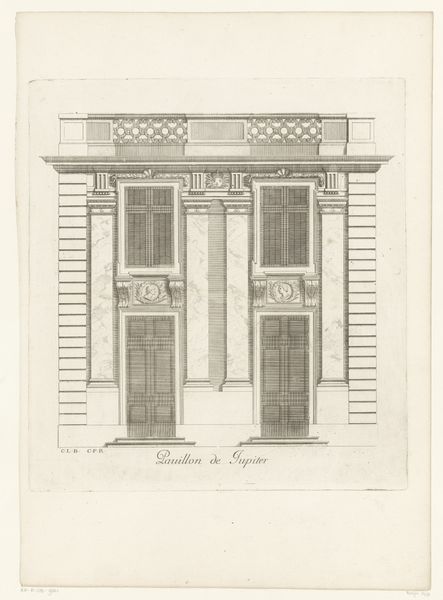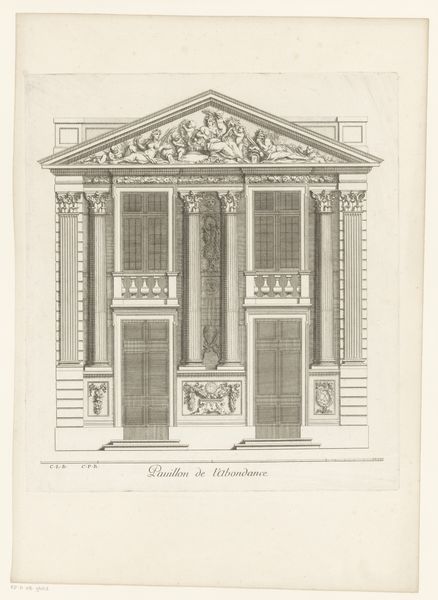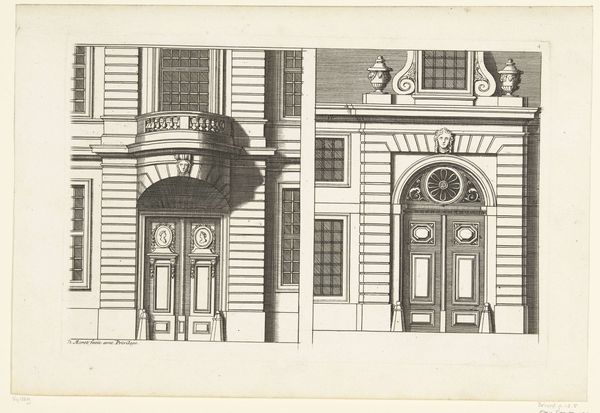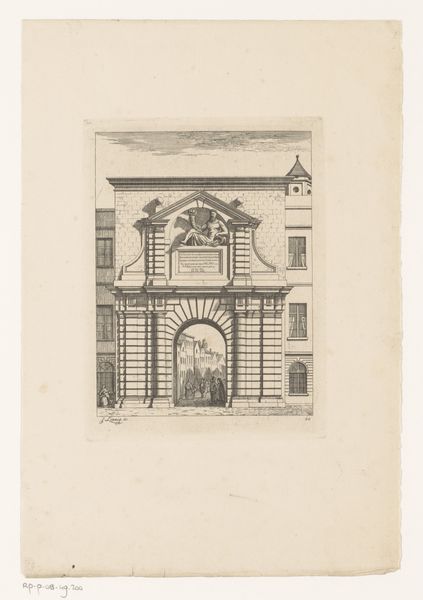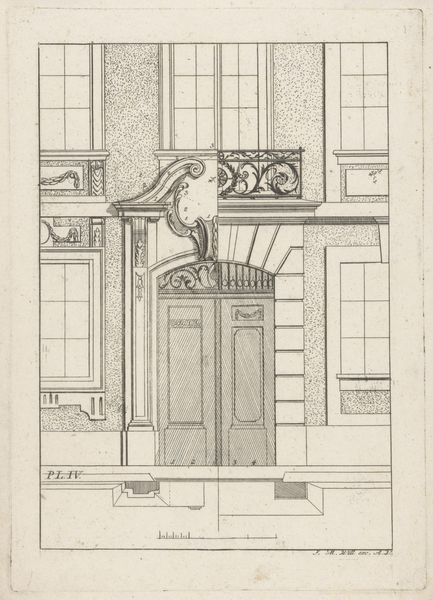
drawing, print, engraving, architecture
#
drawing
#
baroque
# print
#
pen illustration
#
old engraving style
#
pen-ink sketch
#
pen work
#
history-painting
#
engraving
#
architecture
#
building
Dimensions: height 376 mm, width 346 mm
Copyright: Rijks Museum: Open Domain
Editor: This is "Paviljoen van Apollo en Thetis" by Louis de Châtillon, created between 1672 and 1686. It's an engraving and drawing depicting, I think, a garden pavilion. I am drawn to the intricacy of the detailing, like it demands so much craftsmanship! How do we interpret this architectural print through the lens of materials and labor? Curator: Good eye noticing the craftsmanship! Looking at it materially, this engraving points us to a whole system of production. Consider the paper – where did that pulp come from? Who made it? Think also about the engraver’s tools – metal chisels, inks… All those elements had to be mined, forged, and processed. Editor: So it's less about the idealized image, and more about the network required to make it? Curator: Precisely! The Baroque period often masked the gritty realities of production behind these grand facades. These architectural renderings were a luxury good, not just in the final cost, but in terms of the labor invested. Who had the resources and social standing to commission and consume them? Was this about control? Editor: Hmmm, yes. The very *idea* of the pavilion, a leisure space for the elite, speaks to an economy that enables such extravagant creations and then to reproduce an image of that creation seems like… control? Curator: The image itself circulates as a commodity. Who could own it? Whose labour went unpaid? So many questions! These detailed drawings not only represent spaces but also a whole social order. Editor: Thinking about all the hidden hands in creating this image is pretty powerful. Curator: Absolutely, every print is not only an object of beauty but a document of its time. Editor: Right! So appreciating the social implications changes how we view art’s impact and the process of its creation.
Comments
No comments
Be the first to comment and join the conversation on the ultimate creative platform.

